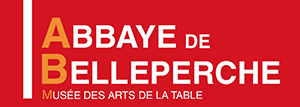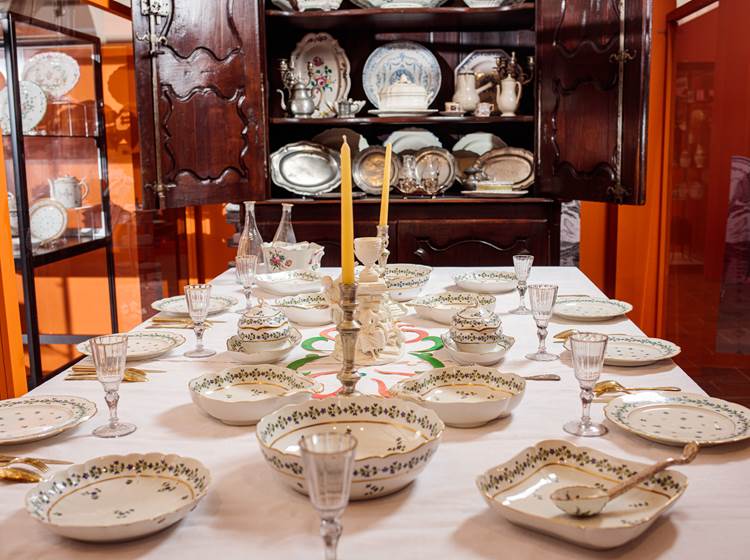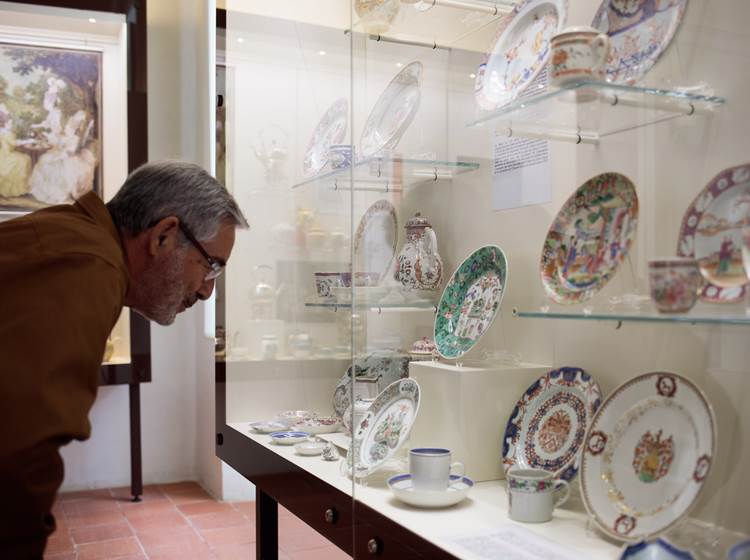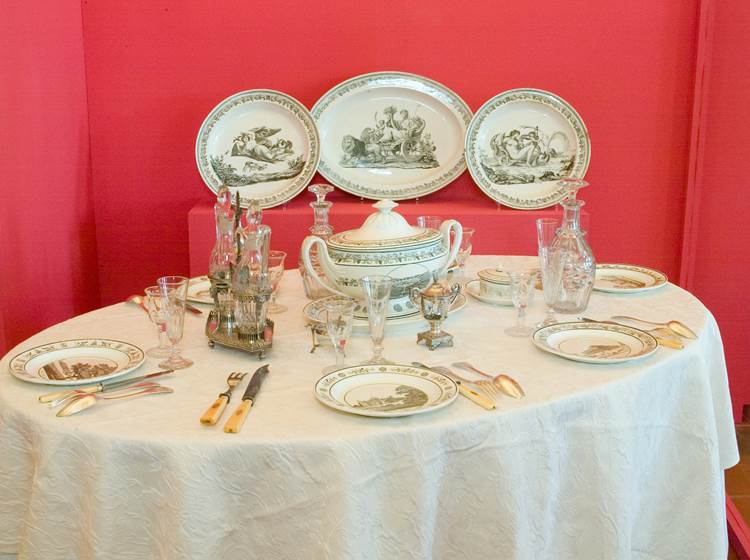Why a Tableware Museum at Belleperche Abbey?
Creating and developing a museum of tableware in a former Cistercian abbey may seem surprising, as the image that comes to mind, when one evokes the order of Cîteaux , is that of austerity, prayer and manual labor. However, in modern times, many of the great French abbeys have carried out hotel activities in the direction of high-ranking society. Premises were refurbished or built in the 17th and 18th centuries, in order to welcome guests for the duration of a stay or for apartment rentals, and the financial means of the wealthiest monasteries favored the hiring of the best cooks.
The abbey of Belleperche has preserved the installations made in the 18th century for the reception function: the guest rooms on either side of a huge gallery , two staircases of honor which followed one another in the 18th century , two winter and summer reception apartments including dining room and living room, but also the rooms of the prior and the abbot, the kitchen and the refectory built in 1701 where certain guests dined with the monks.
It is with reference to the history and the preserved spaces that the D epartmental Council of Tarn-et-Garonne has chosen to orient the new life of the Abbey of Belleperche towards tableware , a theme that crosses and connects ages, countries, cultures.
Since 2002, the Department of Tarn-et-Garonne has collected and enriched collections which illustrate the evolution of table practices and related objects. Intended for drinking and food consumption, from the end of the Middle Ages to the 21st century, crockery, glassware, cutlery, utensils and accessories, for daily or festive use, popular, bourgeois or aristocratic, artisanal and industrial .
How were we serving? How did our ancestors eat? Why do we use cutlery and plates today? So many questions to which you will find an answer by visiting the Abbey of Belleperche and its Tableware Museum .

The table nave in silvered and gilded brass, after a 16th century illumination (design by Guillaume Roncelet)
Appeared in the 14th century and widely used until the 17th century, naves of gold, silver or gilded copper were princely objects, in which, originally, napkins, cutlery, slicers were placed spare, toothpicks, salt, spices. Moreover, the shape of the nave perhaps recalls the ships which brought back from the East these expensive spices which were believed to come from the earthly paradise. Very quickly, naves became a symbol of power and prestige, the presence of which at the table indicated the high social rank of its owner. There are none left from the Middle Ages, too, to reconstitute a royal table from the 15th century, the museum called on Guillaume Ronceret (Aerarius faber) who produced it in 2021. It will be joined, in 2022, by other objects from the hands of Guillaume Ronceret, representative of power but also of the fear that this time had poisoning: a covered cup, a covered salt shaker and a "tongue holder" from which will be suspended the teeth of fossil sharks, which at the time were said to be petrified snake tongues and which, according to beliefs, detected the presence of poison in food.
under construction ... a little patience
under construction ... a little patience
Creating and developing a museum of tableware in a former Cistercian abbey may seem surprising, as the image that comes to mind, when one evokes the order of Cîteaux , is that of austerity, prayer and manual labor. However, in modern times, many of the great French abbeys have carried out hotel activities in the direction of high-ranking society. Premises were refurbished or built in the 17th and 18th centuries, in order to welcome guests for the duration of a stay or for apartment rentals, and the financial means of the wealthiest monasteries favored the hiring of the best cooks.
The abbey of Belleperche has preserved the installations made in the 18th century for the reception function: the guest rooms on either side of a huge gallery , two staircases of honor which followed one another in the 18th century , two winter and summer reception apartments including dining room and living room, but also the rooms of the prior and the abbot, the kitchen and the refectory built in 1701 where certain guests dined with the monks.
It is with reference to the history and the preserved spaces that the D epartmental Council of Tarn-et-Garonne has chosen to orient the new life of the Abbey of Belleperche towards tableware , a theme that crosses and connects ages, countries, cultures.
Since 2002, the Department of Tarn-et-Garonne has collected and enriched collections which illustrate the evolution of table practices and related objects. Intended for drinking and food consumption, from the end of the Middle Ages to the 21st century, crockery, glassware, cutlery, utensils and accessories, for daily or festive use, popular, bourgeois or aristocratic, artisanal and industrial .
How were we serving? How did our ancestors eat? Why do we use cutlery and plates today? So many questions to which you will find an answer by visiting the Abbey of Belleperche and its Tableware Museum .
- Follow the latest acquisitions:
The table nave in silvered and gilded brass, after a 16th century illumination (design by Guillaume Roncelet)
Appeared in the 14th century and widely used until the 17th century, naves of gold, silver or gilded copper were princely objects, in which, originally, napkins, cutlery, slicers were placed spare, toothpicks, salt, spices. Moreover, the shape of the nave perhaps recalls the ships which brought back from the East these expensive spices which were believed to come from the earthly paradise. Very quickly, naves became a symbol of power and prestige, the presence of which at the table indicated the high social rank of its owner. There are none left from the Middle Ages, too, to reconstitute a royal table from the 15th century, the museum called on Guillaume Ronceret (Aerarius faber) who produced it in 2021. It will be joined, in 2022, by other objects from the hands of Guillaume Ronceret, representative of power but also of the fear that this time had poisoning: a covered cup, a covered salt shaker and a "tongue holder" from which will be suspended the teeth of fossil sharks, which at the time were said to be petrified snake tongues and which, according to beliefs, detected the presence of poison in food.







